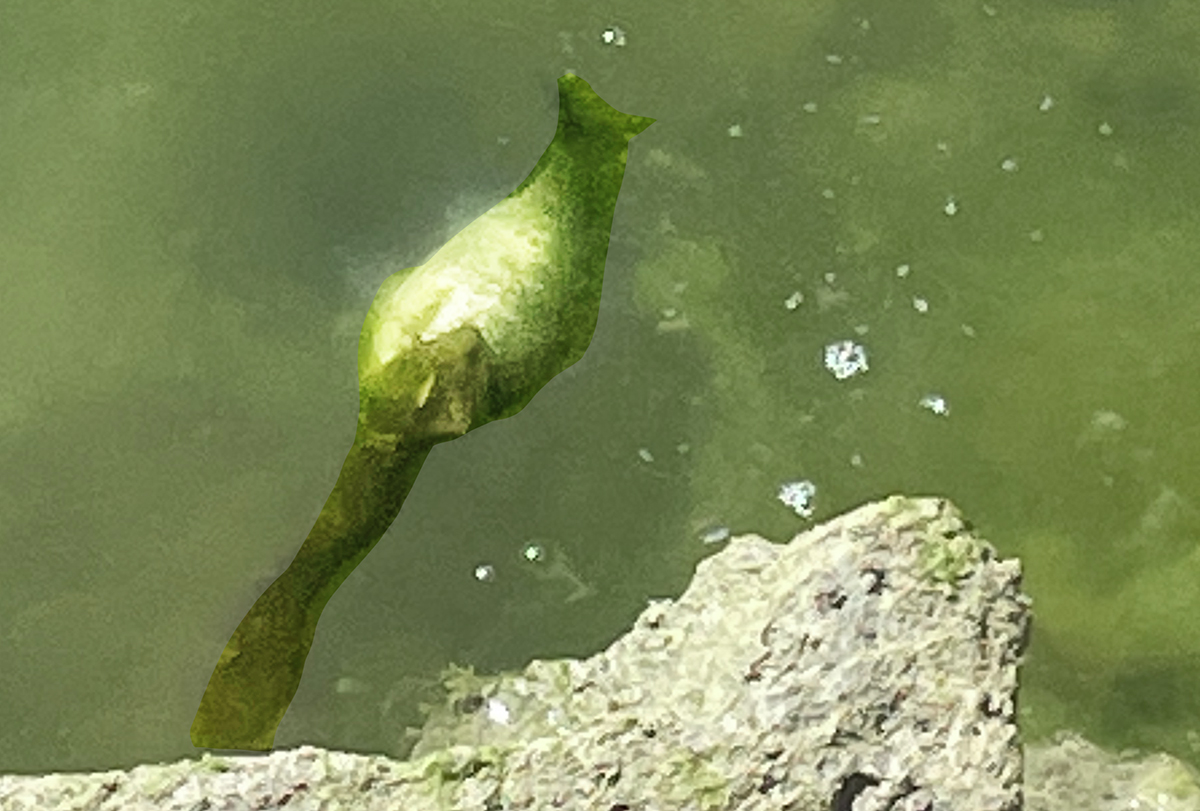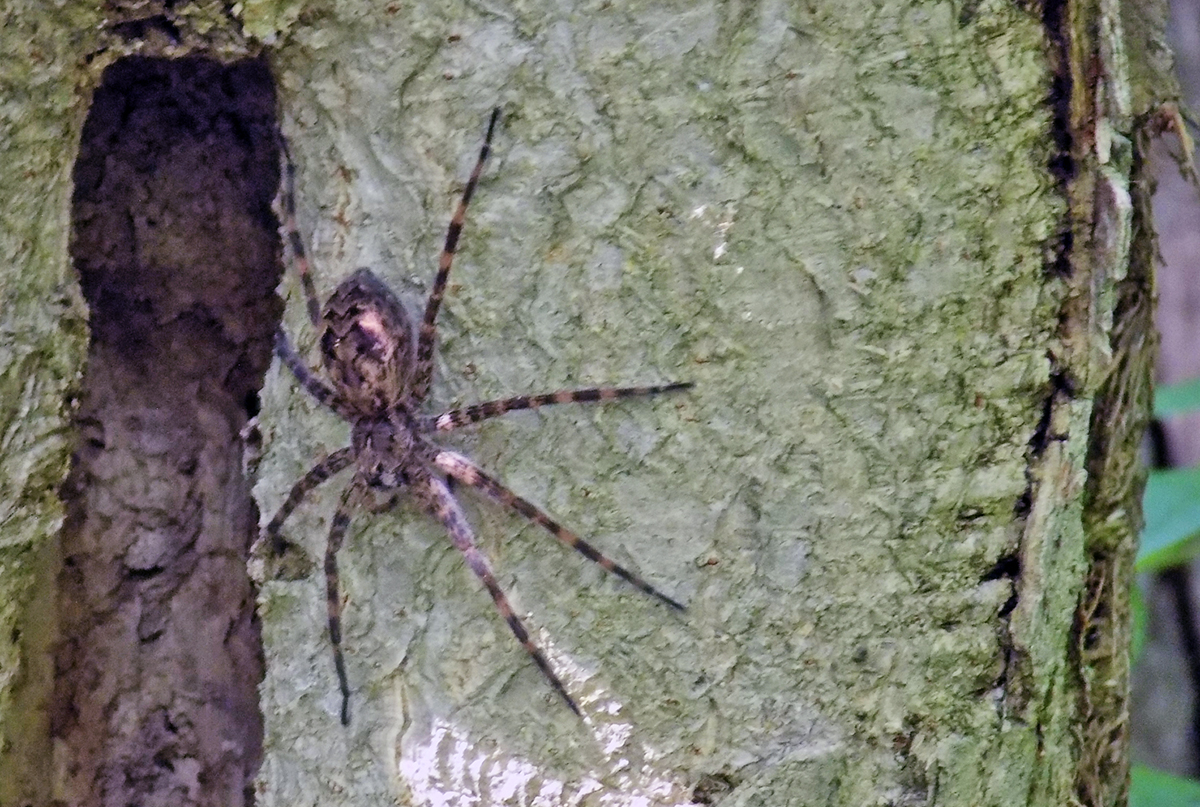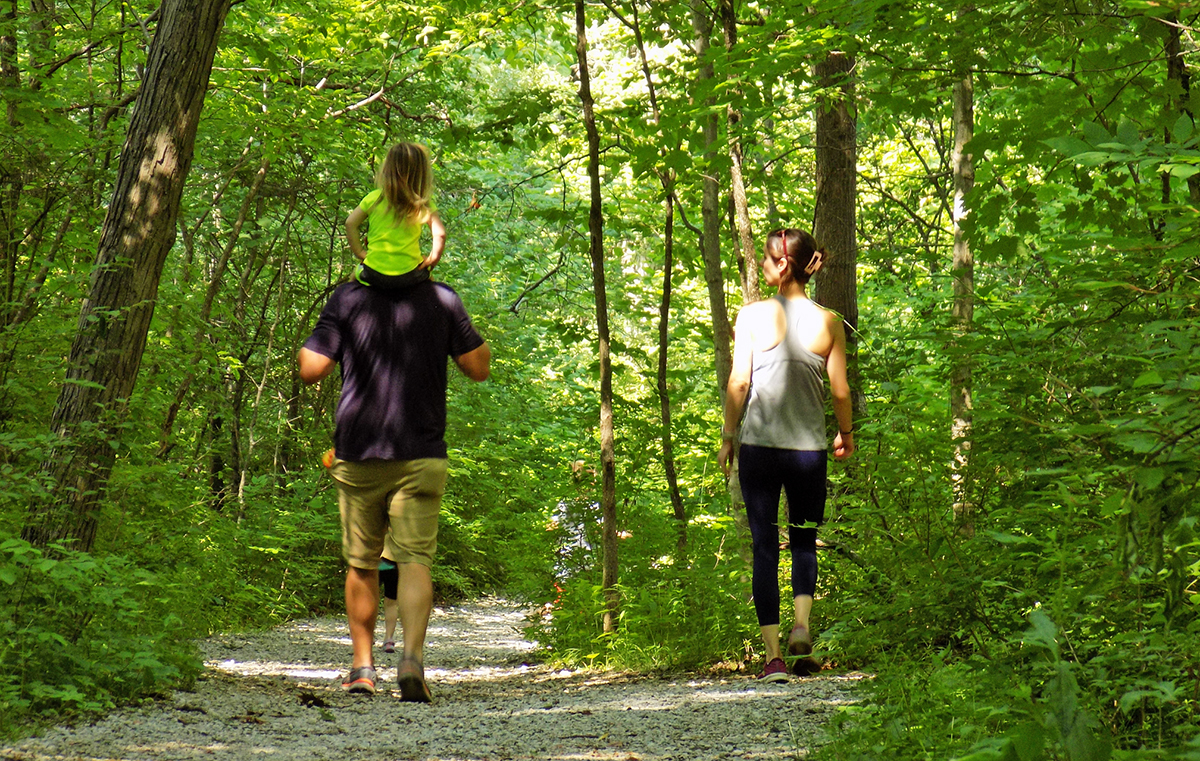HONOUR LACKEY
Visitor Engagement Intern

This month, a short video of a common northern watersnake eating a crappie at Quarry Trails Metro Park garnered a lot of comments on Metro Parks’ Instagram Reels. “I did not move from Florida to Ohio for this,” said one user. “And THIS is why I stopped going to parks. That’s a big nope nope,” said another. Another commenter wrote: “Never going paddleboarding again.”
That isn’t to say there weren’t positive comments, or that the commenters quoted above weren’t being purposefully hyperbolic — many viewers were delighted to see such an up-close display of the circle of life and the natural world. But these reactions got me thinking: How much can we as visitors recognize what is dangerous and what is docile — and does it matter? Why were reactions to this video so passionate?
The northern common watersnake is not venomous. That isn’t to say that you should go out and grab one — they can, and will, still bite you — but rest assured they are not striking copperheads or cobras. They are simply another reptile trying to survive in the wild.
This sentiment was echoed by the group of young visitors I asked about wildlife on the trails. The group said while they don’t often encounter wildlife outside of squirrels or birds, they, for the most part, tend to avoid the wildlife they do encounter — unless it’s cute.
“I try to stay away, I don’t want rabies,” said one visitor. (To clarify, no one has ever got rabies from the wildlife at any of the Metro Parks!) Her friend followed up by saying, “I usually try to get close to take a photo.”
The group said the wildlife they consider less common (ie not squirrels) is usually seen near the water. At the time that we spoke, the visitors were on the Frog Talk Walk at Inniswood Metro Gardens, watching the incredibly active turtles and frogs. The group said they’ve never been afraid of any animals they’ve seen at the parks, but that insects are a different story.
Another visitor interaction I had occurred when one of these aforementioned creepy crawlies made itself known: a gigantic fishing spider, stationary on the bark of a tree on Battelle Darby Creek Metro Park’s Cobshell Trail. Equally grossed out and fascinated, I crouched as close as I dared to try and get a decent photo — as good as the shaking hands of a self-proclaimed arachnophobe would allow! This fishing spider was female, making it one of the largest spiders you can encounter in Ohio. Fun! Not!

But the fishing spider, however horrifying it might look to us, is completely harmless and extremely shy. Even if I didn’t pick up on this shyness, the family passing me obviously did. Three kids — two girls and a boy — knelt down with their dad when I gestured to them that nature was doing its scary-cool thing right in front of us. Their dad was deeply excited to see such a big arachnid and the kids weren’t scared at all (maybe a bit timid, in order not to frighten the eight-legged wonder.) Fascinated and curious, each of them stood next to me as I asked their dad, “Aren’t they afraid of spiders?”
“No,” he said, then pointed at his youngest daughter. “She really likes them.”
I was pleasantly surprised with the reverence these kids held for this spider. They weren’t fearful, but they didn’t try to approach or harass the spider, either. It struck me that these kids, not even double digits, had honed in on a curiosity that wasn’t disruptive, an appreciation that didn’t include intervention. Despite not knowing if the spider was harmless, they already knew that, venomous or not, this spider’s life was none of their business.

Ever since then, I’ve been thinking: yes, of course it’s important to know what wildlife can be dangerous to you and it’s only natural to feel a whoosh of adrenaline when we see something unfamiliar to us. But, no matter how docile, the best course of action is to leave animals and insects alone.
I told those teenage visitors at Inniswood the reason I was asking them about dangerous wildlife, describing the Instagram Reel and the reactions that came with it. One of the visitors began to sing that all-familiar tune: “It’s the circle of life.” Palm-sized spiders, cute fox kits, or fish-eating snakes, it’s all natural — and it doesn’t care how we feel about it.

Well put👍